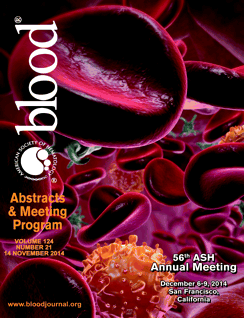Abstract
This study aimed to determine the gene expression profiling (GEP) of bone marrow (BM) CD34+/lin- cells of CML patients at diagnosis and after nilotinib treatment.Microarray was performed on 30 CML patients at diagnosis as well as 8 patients after 12 months of nilotinib treatment using the latest generation Affymetrix GeneChip HTA 2.0 to further investigate genomic complexity.
Bone marrow blood (in a range of 5-20 ml) samples were collected from patients at diagnosis and after 3, 6 and 12 months of nilotinib treatment. BM mononuclear cells were purified by density gradient centrifugation at 800 rpm for 20 min and soon after CD34+/lin- cells were isolated using Diamond CD34 Isolation Kit (Miltenyi Biotec). The purity of CD34+/lin-cells was about 97% as determined by flow citometry and the cells were counted at diagnosis and after the treatment with nilotinib (at 3, 6, and 12 months). BM CD34+/lin- cells of 30 patients at diagnosis and after 3 and 6 months of nilotinib were resuspended in RNAlater (Ambion, Life Technologies) and stored at -20°C until RNA extraction was performed. Total RNA was extracted from BM CD34+/lin- cells using MagMAX 96 Total RNA Isolation Kit (Ambion).
BM CD34+/lin- cells were counted and a range of 100,000-800,000 has been noted at diagnosis.
cRNA was prepared according to OvationPico WTA System V2 kit followed by Encore Biotin Module Kit (NuGEN). Ultimately, cRNA was hybridized to HTA 2.0 and signals were scanned by Affymetrix GeneChip Scanner 3000 following the manufacturer’s instructions.
We observed that the number of CD34+/lin- cells dramatically decreased at 3 months (1,000-600,000), after 6 months (1,000-260,000) and after 12 months (100-130,000). In particular, CD34+/lin- cells were even less than 1000 after 12 months of nilotinib.
If the number of CD34+/lin- cells after 12 months of nilotinib was less than 1000, we directly resuspended the cells in Prelude direct Lysis module (NuGEN) and microarray experiments were performed without RNA extraction. In this case, cRNA was prepared using Ovation One Direct System kit followed by Encore Biotin Module Kit (Nugen) and finally hybridized to the HTA 2.0.
Microarray experiments were performed on CD34+/lin- cells of 30 CML patients at diagnosis with HTA 2.0.
Moreover, we performed microarray experiments on CD34+/lin- cells of 8 CML patients at diagnosis vs. 8 CML patients after 12 months of nilotinib using HTA 2.0.
Data was preprocessed and normalized using Robust Multi-array Average (RMA) algorithm. The Significant Analysis of Microarrays (SAM) was used to identify genes with statistically significant changes in expression in CML patients at diagnosis and at 12 months of treatment. P-values were corrected for multiple testing using false discovery rate.
In conclusion, as far as we know, this is the first study which has isolated BM CD34+/lin-cells from CML patients at diagnosis and after nilotinib treatment.
We observed a wide variety of the number of CD34+/lin- cells in 30 CML patients at diagnosis as well as after 3, 6 and 12 months of nilotinib.
In particular, CD34+/lin- cells of CML patients at diagnosis were over 100.000. RNA was extracted and cRNA was prepared with OvationPico WTA System V2 kit followed by Encore Biotin Module Kit (NuGEN) and finally hybridized to HTA 2.0.
On the other hand, the number of CD34+/lin- cells of CML patients after 12 months of nilotinib markedly decreased as low as 100 cells. In this case, we decided to avoid RNA extraction from the cells and we directly prepared cRNA using Ovation One Direct System kit and Encore Biotin Module Kit (Nugen) followed by the hybridization to the HTA 2.0 Array.
To increase the statistical power in biomarker identification, we combined samples pre-processed with different experimental protocols (NuGEN) using ComBat, an empirical Bayes framework that adjusts data for batch effects and is robust to outliers in small datasets. Principal component analysis applied to the expression data before and after ComBat adjustment shows that the adopted normalization procedure effectively removes the systematic bias introduced by different protocols.
No relevant conflicts of interest to declare.
Author notes
Asterisk with author names denotes non-ASH members.

